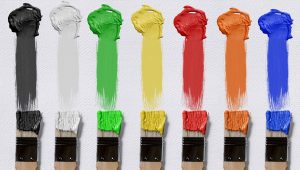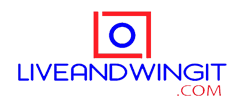Looking for a Paint production feasibility study for your new or existing enterprise?
Download this paint production feasibility study which you can download to present to NIRSAL, TEF BOI, BOA, and other investors.

Paint production is an important industry in Nigeria, as paints are used for various purposes such as decoration, protection, and preservation of buildings, machines, and equipment. Nigeria has a large market for paints due to its growing construction industry and the need for the maintenance of existing structures. Here are some important things to note about paint production in Nigeria:
Raw Materials: The main raw materials used for paint production in Nigeria are resins, pigments, solvents, additives, and fillers. Some of these raw materials are imported, while others can be sourced locally.
Manufacturing Process: The manufacturing process for paint production involves mixing the raw materials in specific proportions, grinding the mixture to achieve the desired particle size, and then adding the necessary additives and solvents to achieve the desired characteristics of the paint.
Market: The Nigerian paint market is growing, with an increasing demand for decorative paints and industrial coatings. Major players in the industry include Berger Paints Nigeria, Portland Paints and Products Nigeria, and Chemical and Allied Products (CAP) Plc.
Regulations: The Standards Organisation of Nigeria (SON) is the regulatory body responsible for ensuring that paint products meet the required quality standards. Manufacturers must comply with the standards set by SON to ensure that their products are safe for use.
Challenges: Some of the challenges facing the paint industry in Nigeria include the high cost of raw materials, inconsistent power supply, and competition from imported paints.
Despite the challenges, paint production remains an important industry in Nigeria, with opportunities for growth and investment.
PAINT PRODUCTION AND MANUFACTURING PROCESS
Paint has been an essential part of human expression and innovation for centuries, serving both aesthetic and protective purposes. From prehistoric cave paintings to modern urban landscapes, paint has evolved significantly in terms of composition and manufacturing processes. This article delves into the intricate world of paint production, unraveling the key steps involved in the creation of this versatile substance.
- Raw Materials
The first crucial step in paint manufacturing is the selection of raw materials. Paints generally consist of three main components: pigments, binders, and solvents. Pigments provide color and opacity, binders ensure adhesion and durability, and solvents contribute to the desired consistency. Additionally, additives such as stabilizers, thickeners, and dispersants may be included to enhance specific properties of the paint.
- Weighing and Mixing
Once the raw materials are sourced, the next step involves weighing and measuring them precisely according to the desired paint formulation. The accuracy of these measurements is crucial to achieving consistent product quality. The raw materials are then thoroughly mixed to form a homogeneous mixture. This step can be performed using various mixing technologies, including high-speed dispersers or milling equipment.
- Dispersion
Dispersion is a critical stage in paint production, during which the pigments are evenly distributed throughout the mixture. This is achieved through processes like grinding, milling, or high-speed stirring. The goal is to break down pigment agglomerates and achieve a uniform particle size distribution. The efficiency of dispersion significantly impacts the paint’s color, opacity, and overall performance.
- Preparation of Binders
Binders play a crucial role in determining the paint’s adhesion and durability. Common binders include resins, which can be acrylic, alkyd, epoxy, or polyurethane-based. The preparation of binders involves mixing the chosen resin with solvents and other additives to create a stable and effective binding agent. This binder is then combined with the pigment dispersion.
- Let-Down
The let-down phase involves combining the pigment dispersion with the prepared binder in carefully controlled ratios. This step is critical in achieving the desired color, consistency, and other properties of the final paint product. The let-down process may involve additional adjustments, such as the addition of more solvents or thickeners, to achieve the desired viscosity and texture.
- Quality Control
Quality control is an integral aspect of paint manufacturing. Rigorous testing is conducted throughout the production process to ensure that the paint meets the required specifications. Parameters such as color consistency, viscosity, drying time, and durability are carefully monitored. Any deviations from the standards are addressed promptly to maintain product quality and customer satisfaction.
- Packaging
Once the paint has passed quality control tests, it is ready for packaging. Paint is typically packaged in containers ranging from small cans for consumer use to large drums or tanks for industrial applications. Proper labeling and documentation are crucial at this stage to provide users with essential information, including application guidelines, safety precautions, and product specifications.
Conclusion
Paint production is a sophisticated blend of science and art, where precision and creativity converge. The manufacturing process involves careful selection of raw materials, precise measurements, and quality control to produce paints that not only add color to our surroundings but also offer protection and longevity. As technology advances, the paint industry continues to evolve, introducing innovative formulations that cater to diverse needs and preferences. The next time you admire a beautifully painted surface, remember the intricate journey that the paint undertook from raw materials to the final masterpiece.
BUSINESS PLAN AND FEASIBILITY SAMPLE FOR PAINT MANUFACTURING
1.0. Executive Summary
Glossy Paints Nigeria PLC is a licensed paint production firm that will be based in Ikeja, Lagos. This is an ideal location for the type of manufacturing business that we want to develop. We plan to develop a standard paint production firm, which is why we obtained a large facility that suits the concept of the type of manufacturing company we envision.
Glossy Paints Nigeria PLC will serve a diverse clientele in and around Ikeja, Lagos. We will manufacture paints, varnishes, lacquers, stains, and other related items.
To compete favorably, we have spent time and money doing feasibility studies and market surveys in order to be well-positioned among all of our rivals.
We will hold ourselves to the highest standards by meeting our customers needs precisely and completely whenever they use our products, and we will also demonstrate our commitment to sustainability, both individually and as a company, by actively participating in our communities and incorporating sustainable business practices wherever possible at all times.
Sam Adebiyi and his family operate Glossy Paints Nigeria PLC, a family company. Sam Adebiyi holds a B.S. in Chemical Engineering from the University of Ibadan and an MBA from Lagos State University, as well as over 15 years of expertise in the paint production sector, having worked for some of Nigeria’s largest companies.
2.0. OUR PRODUCTS AND SERVICES
Our product includes the following features:
- Coatings for buildings
- Latex paints and enamel paints
- Epoxy coatings created with bought resins
- Coatings and finishes for industrial products
- Preparations for paint thinners and reducers, paintbrush cleansers, and paint and varnish removers
- Coatings made of polyurethane
- Coatings in powder form
- Varnishes, lacquers, shellac, and stains are all examples of finishes.
3.0. Mission and Vision
- Our goal is to become one of the greatest brands in the Nigerian paint production sector.
- Our goal is to build a world-class paint manufacturing company whose products will not only be sold and used in Nigeria but will also be exported to other nations across the world.
4.0. Our Organizational Structure
Glossy Paints Nigeria PLC does not want to launch a paint production business in the traditional sense; rather, we intend to establish a standard business whose goods will be sold to other nations across the world. We will guarantee that the proper framework is in place to accommodate the type of development that we envision when we set up the firm.
As a result, we have chosen to hire skilled and suitable employees to fill the following positions:
- Executive Vice President (Owner)
- Accountants/Cashiers
- Customer Services Executive/Front Desk
- Officer Plant
- Manager
- Human Resources and Admin Manager
- Sales and Marketing Manager
- Paint Machine Operator
Strength
Our fundamental strengths are the excellent quality of our goods, our state-of-the-art paint manufacturing facilities, and the strength of our workforce.
Weakness
One significant disadvantage is that we are a new paint production firm with insufficient financial resources to compete with multi-million naira paint manufacturing enterprises in Nigeria.
Opportunities
Because we will be running our paint production firm in Lagos, we will have an unlimited number of possibilities to sell our goods to a big number of individuals and organizations.
Threat
One of the primary challenges that we are likely to confront, like any other firm, is the economic slump. An economic slump indeed has an impact on purchasing/spending power. Another potential threat is the establishment of a new paint production firm in the same location as ours. Unfavorable government policies may potentially pose a danger to enterprises like ours.
5.0. Our Target Audience
We’ve done our market research and feasibility studies, and we know what our target market expects from us. We are in the business of producing a wide range of paints and associated goods for the following customers:
- Home improvement firms
- Construction firms
- Suppliers of construction materials
- Painters, carpenters, and furniture manufacturers
- Manufacturing firms for roofing construction
6.0. Income Sources
Glossy Paints Nigeria PLC will make money by selling the following items:
- Architectural coatings, enamel, and latex paints, epoxy coatings created from bought resins, industrial product finishes and coatings, paint thinner and reducer preparation.
- Water-repellent coatings for wood, concrete, and masonry, as well as wood fillers, primers, and putty.
Do you want a full paint manufacturing feasibility analysis sample?
How To Download Paint Production Feasibility Study PDF and Doc (With financial analysis)
Pay the sum of N8000 (eight thousand naira only)to the account detail below:
Bank: GTBank
Name: Oyewole Abidemi (I am putting my name and not our company account so you know I am real and you can trust me, and trace me)
Ac/No: 0238933625
Type: Saving
P.S: We can also tailor the Paint Production feasibility study and Business plan to your name, business size, capital requirements, and more to fit your direct needs. Call or message +234 701 754 2853 for inquiries.
